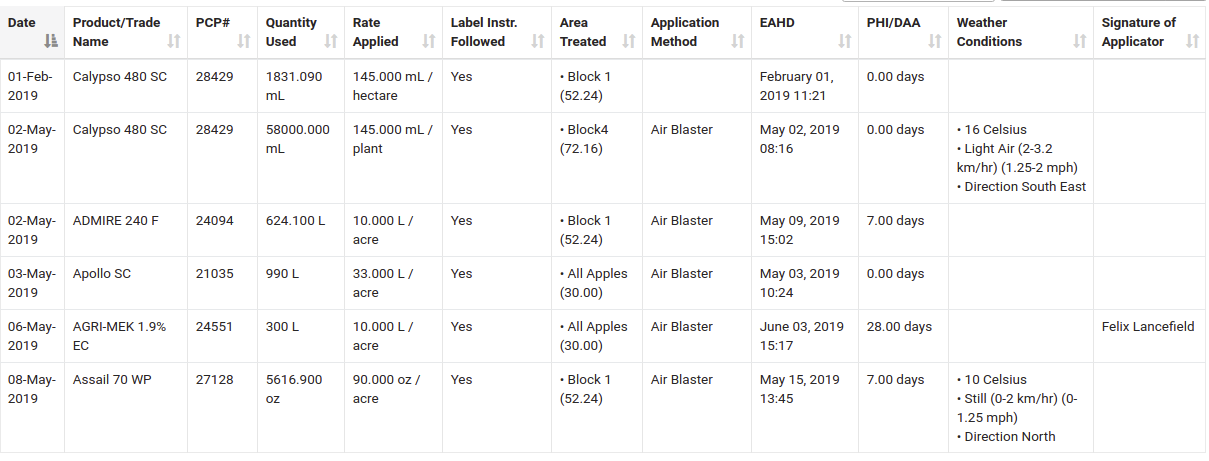Pesticide and chemical use regulations in place today mean that keeping up-to-date, accurate spray records is more important than ever, not only for product traceability and food safety, but for worker security and WPS compliance. This page offers some answers to frequently asked questions about spray record keeping and includes some report format examples for supporting accurate spray records.

Why do I need spray records?
Maintaining spray records is a vital part of your farm’s operations, especially when it comes to auditing time. Spray records are used to track REI, PHI, and EAHD. Keeping an accurate pesticide and chemical use record is not only crucial for your farm's records and certifications, but is a legal requirement.
What are REI and PHI?
Exposure to pesticides even after application, either through skin contact or inhalation, can pose a huge risk to your workers. Restricted Entry Intervals, or REIs, are in place to prevent chemical exposure until residues are dispersed and your fields are safe to enter. The PHI, or Pre Harvest Interval, is the amount of time in days or hours before a crop can safely be harvested. The PHI can be used to determine the EAHD.
What is the EAHD?
The EAHD, or Earliest Allowable Harvest Date, is calculated based on the PHI, and represents the date when the crop may be safely harvested for consumption.
Do I need a License to Apply Agricultural Chemicals?
Regulations for pesticide licensing can vary depending on your area. For Canada GAP certification, applicators of chemicals must have either a certified applicator license or have completed formal training in chemical application.
What are MRLs?
MRLs or Maximum Residue Limits are standards put in place to determine the maximum chemical residue amount remaining on a food product that is safe for consumption. MRLs typically apply to any raw agricultural product or crop, or any processed food that may have come into contact with chemical pesticides.
What is an Active Ingredient?
An ‘Active Ingredient’ is the ingredient of an agricultural chemical that actually controls the targeted pest. It is typically the ingredient that drives the REI and PHI timing,
What is Integrated Pest Management (IPM)?
IMP is a decision-making process that uses all necessary techniques to suppress pests effectively, economically and in an environmentally sound manner. Spray’s are typically an integral part of IPM strategies and historical spray records compared to harvest yields and scouting records help to refine these strategies over time.
To make your record keeping easier, we’ve compiled some easy to use Spray Record and Spray Application Record templates. Just enter your email below.
Basic spray record template

Canada GAP spray record template

Having trouble keeping your paper records organized? Check out Croptracker’s Spray Record Keeping module!
Record sprays and spray plans, access our chemical database and treatment templates and generate chemical and spray reports at the touch of a button. Let Croptracker handle the math with our built-in tank mix calculator. Enter spray data straight from your computer or mobile phone with our spray records app.

